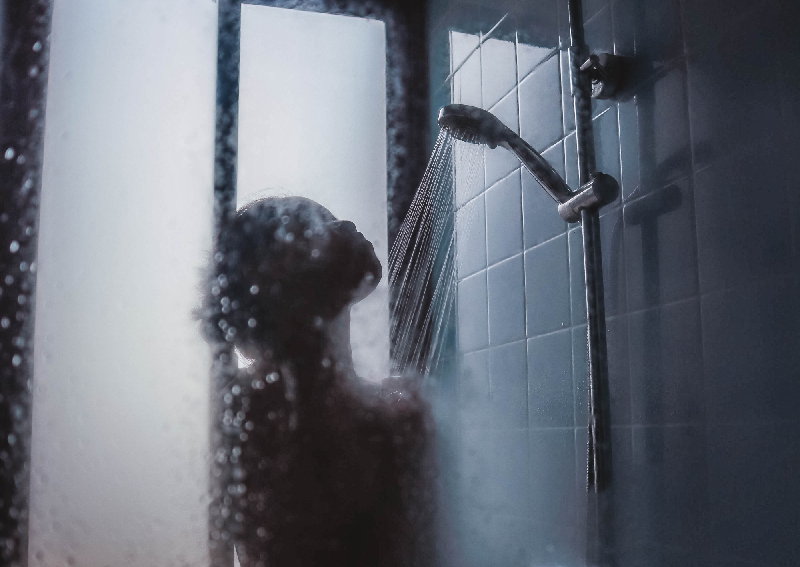10 common personal hygiene mistakes that you need to stop making right now

Having good personal hygiene isn't as simple as brushing your teeth and showering every day.
More often than not, we might be committing personal hygiene mistakes unknowingly because we might not realise that simple things such as taking hot showers and neglecting to clean our fingernails are harmful to our skin and health.
Read on to find out if you are guilty of committing any of these 10 common personal hygiene mistakes.
NOT REPLACING YOUR BATH SPONGE
Washcloths and loofahs can harbour bacteria, mould, and yeast, among other harmful things. Make sure you allow your loofah to dry completely each time and replace it frequently.
If you cleanse with a washcloth, grab a fresh one every day and don't use it on your face. This is very irritating to the skin and ends up causing dry areas, breakouts, and even sores.
WASHING YOUR FACE AFTER A WORKOUT

Washing your face after a workout feels refreshing and seems like the hygienic thing to do. However, it's best to splash some water on your face before your workout.
When you perspire, you tend to wipe your skin, which means you wipe in and rub in the grime, the dirt, and the oils that were there, and that aggravates acne. Wash them off before you do your sports.
ONLY SHOWERING IN THE MORNING

A morning shower is a nice ritual and gently wakes you up after a night of sleep. While there is nothing wrong with showering before work, it may be healthier to shower at the end of your day.
Showering at night can help you sleep better and keeps your sheets cleaner. By washing off all of the dirt, oil, and impurities that have gathered on your skin throughout the day, you'll be able to maximise your beauty sleep.
WAITING TOO LONG TO APPLY LOTION POST-SHOWER

On the topic of showers, be sure to not wait too long post-shower to apply your moisturiser.
Pat your skin dry, don't rub it, and then apply your moisturizers to help lock in moisture that was picked up during bathing.
RESTING YOUR HANDS ON YOUR FACE

How often do you find yourself touching your face or resting your face in your hands? Each time we do that, we add dirt to our faces.
This is a habit that is tough to break, so just start trying to notice how often you rest your face in your hands. Then focus on finding different ways to sit to keep your face clean and pores clear.
TAKING YOUR PHONE TO THE TOILET

It sounds gross, but raise your hand if you've ever pulled out your phone while hanging out in the bathroom.
The cell phone in the bathroom can keep you entertained, but it picks up loads of bacteria that you are putting on your face, so take special care not to take the phone into a bathroom and toilet (especially public ones!)
TAKING HOT SHOWERS

There's nothing better than stepping into a hot, steamy shower on a cold morning. However, even though it feels great, that hot water isn't doing your skin any favours.
The hot water opens the pores, which promotes water loss and also washes away the skin's protective emollient oils.
NOT CLEANING YOUR FINGERNAILS

You probably wash your hands regularly throughout the day, but many of us rush through the process and get back to work. It's vital to really cleanse your hands, and that includes cleaning out your fingernails, too.
Bacteria and dirt can linger underneath nails, and if you touch your figure or put your hands in your mouth, it is a fast gateway into your digestive system.
USING TOO MUCH MOUTHWASH

Mouthwash seems like a healthy practice to have, but it can be too harsh for some. Alcohol-based mouthwashes actually tend to dehydrate the mouth.
In turn, drier conditions are a breeding ground for bad bacteria. It's better to use mouthwash sparingly throughout the week.
USING SOAP EVERY DAY

Skin feeling dry? Rather than applying more lotion, you probably just need to use less soap.
If you're battling dry skin, try less frequent use of soap in the shower or bath (except personal areas, as those should be sudsed up daily). Some doctors say it's okay to reduce using soap to just one to two times per week.
This article was first published in CLEO Singapore.